I have a few RUGOTREAT X 13-1 seedlings that look great. One seedling has a symptom of leaves drying up. Does anyone have an idea of what’s up with this one seedling? RUGOTREAT is rugosa hybrid out of R. rugosa rubra F3 with F1 being treated and converted to tetraploid.
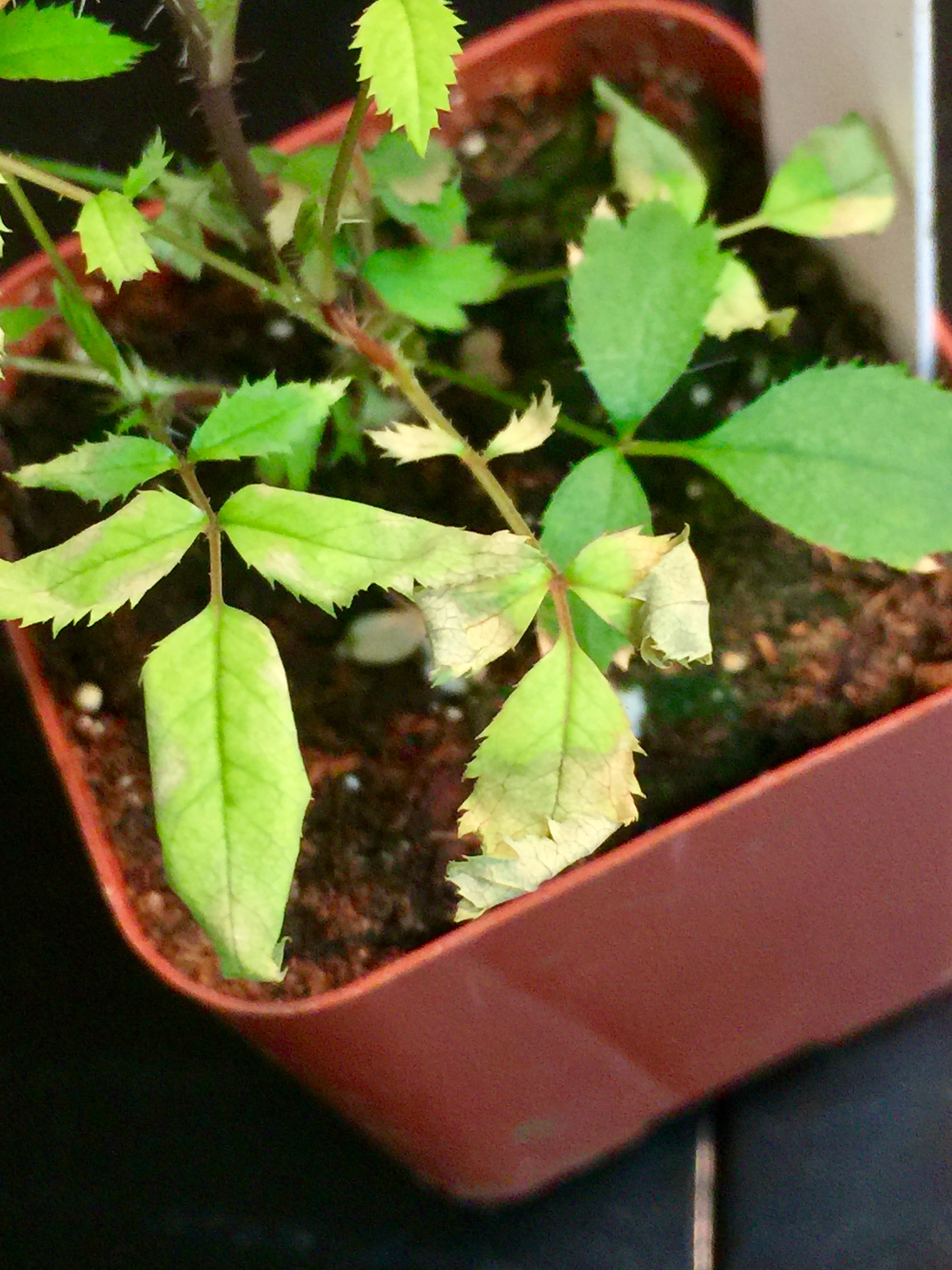

Rob it could be two things, soil media to wet or excessive salts in the potting media eg. fertilizers.
Cheers Warren
And/or perhaps mites? Too high heat/too close to the light? Perhaps this one’s foliage is more sensitive to light/heat intensity? I’ve had several Fedtschenkoana hybrids with softer, more easily damaged foliage. I usually cull those.
I was wondering about disease but drying out may make better sense. No mites that I can detect. It may need to be culled. Thanks Kim!
I’d recommend against culling them yet. You don’t know exactly what caused this, and I don’t think it is just sensitivity to light.
Warren’s possibilities are good. Excess nitrogen fertilizer causes leaves to burn by turning white around the outer edges.
It also looks similar to the results of a one-time wilting episode or exposure to frost.
Or severe iron chlorosis caused by high water alkalinity. Rugosas can be sensitive to high pH. I thought you guys were generally acidic, though, on the east coast. You probably would have noticed rugosa seedlings in the past becoming chlorotic if your water has high alkalinity.
Soggy roots, a common problem with peat mix. I incorporate 50% or more perlite in my mix to prevent this. The finer the mesh size, the better. I use pour-in insulation, actually, much more cost effective than the ag stuff but can be breathing hazard so wear a mask and handle it wet.
I met a company rep from a (the) big peat mix company at a trade show a few years ago and asked him why they didn’t sell such a mix. His answer was that they were in business of selling peat moss.
Sorry, I didn’t see your response earlier. Great suggestions Warren. I’ll watch the watering to see if that helps.
Thanks Joe. This seedling has been under lights soon after germination and not outside. I don’t seem to have the problem with any other seedlings, just the one.
You guys have given me lots to look at and I won’t cull it right away. I’ll wait to see how it performs outside.
The seedling was in a peat mix but I have re-potted it using seed starting potting soil. Over watering could be a possibility and I’ll watch that in the future.
I second wet soil media. I had something similar happen to a rugosa ‘Snow Pavement’ potted in peat-based Pro-Mix HP, photos attached.
Damage in leaves was very sudden & upon removing from the pot I noticed the mix was wet and compressed at the bottom and some roots had died.
Issue was solved once watering was reduced and pot lifted for better airflow, and did not occur at all once planted in the ground.
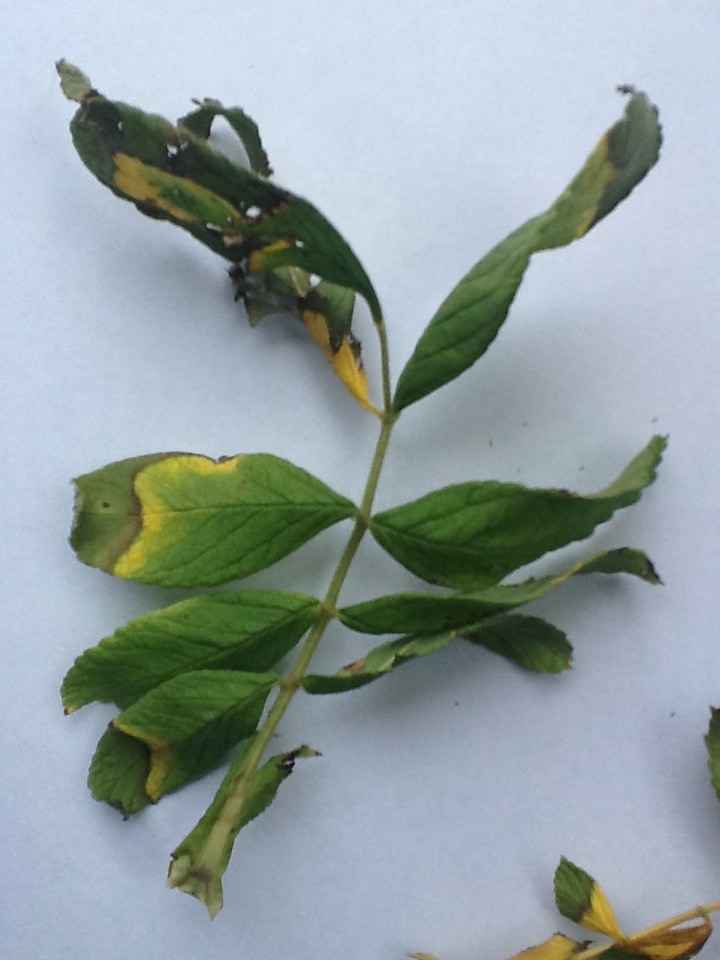
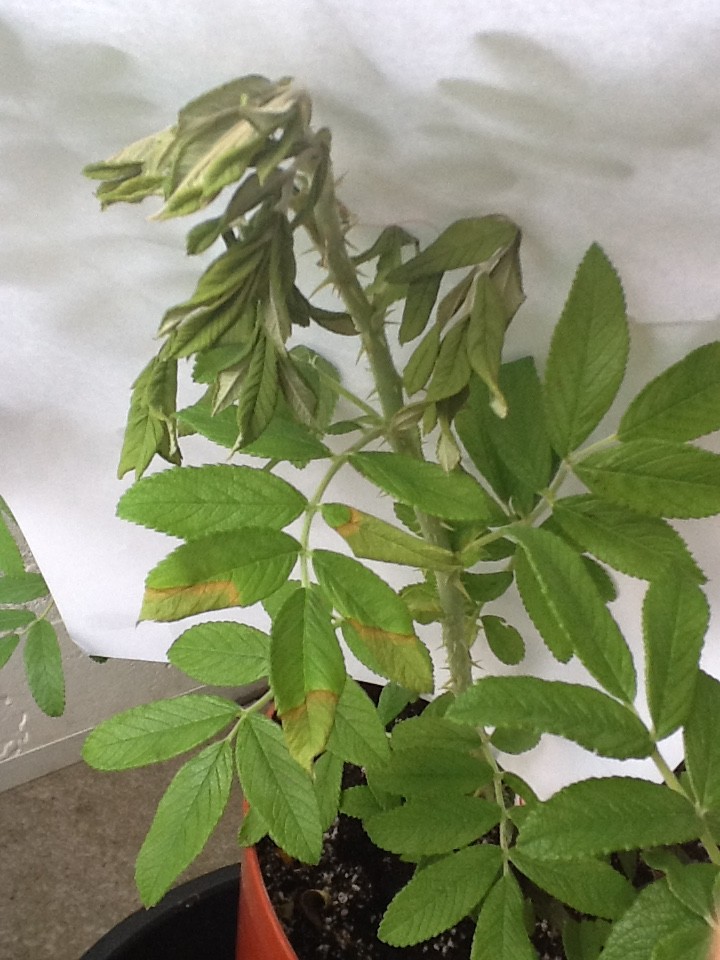
I think my mystery has been solved. Over watering looks like the most logical explanation. Thank you Roselynn.
Rob…I see this happening under grow lights every winter especially with some of my closer-to-species hybrids…and your photos exactly illustrate what goes on here…bottom leaves scalding…seedlings that were once a dark green turning chlorotic…and left to their own, perishing in many cases. The potting mix/moisture/fertilizer are exactly the same and the majority of the seedlings thrive…but some don’t like those conditions so I will add one more cause…genetic variation. To illustrate this point…the photos show two chlorotic F1 r. arkansas seedlings…one juvenile bloomer and one just vegetative growth… from my 2017 seed crop. With the exception of some spinosissima hybrid seedlings, these r. arkansas seedlings were practically the only chlorotic seedlings in hundreds of seedlings growing out this winter…no rugosa hybrids to compare. The orange juvenile bloomer is of value to me so I repotted it and take it out daily from under the 24 hr grow lights and place in a window sill for natural light during daytime. If you look closely, it appears to be rejuvenating…i.e.new, dark green leaves at the base of the bud…this bud is the second flush. Basal lateral buds are swelling and I think both plants will survive…but intervention was required…and I usually cull seedlings like this…but not in this case as I’ve grown to accept the fickle healthiness that often accompanies species F1s.

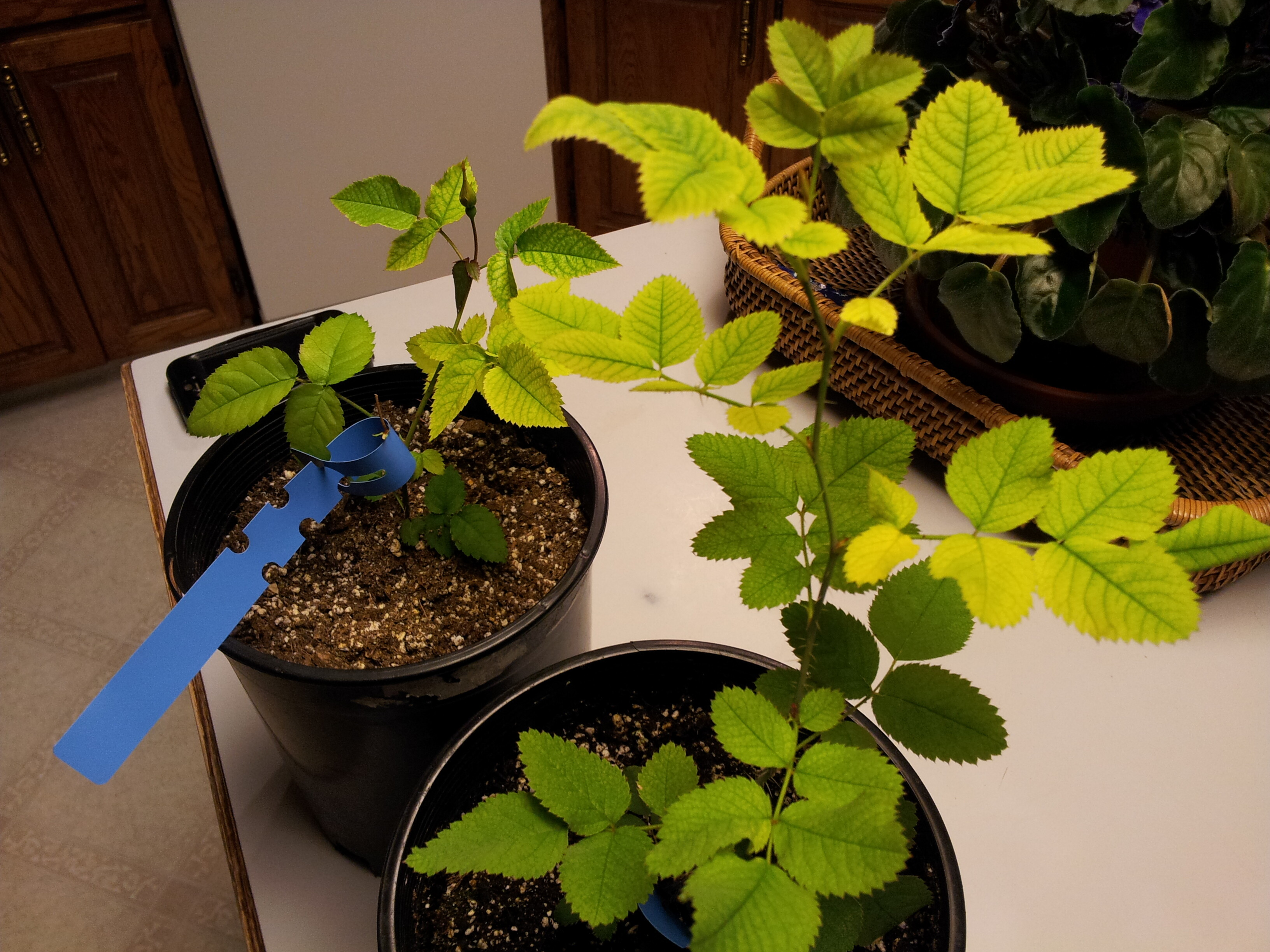
Hi Doug,
Looks like nitrogen deficiency. Suggest watering with a weak Hoagland solution or similar “off-the-shelf” liquid fertiliser like Phostrogen in the short term and then later re-potting with fresh mix containing some controlled slow-release fert.
Regards, Hamish
Hamish…couldn’t agree with you more in that it looks like a N2 deficency. I use a very high end fertilizer that commercial rose breeders use for seedling development. If you click on the top photo, you will notice that the new growth under the bud is perfect…without a change of fertilizer regime. In my humble opinion, the likely trigger was over-moist growing media conditions exacerbated by the above mentioned F1 species vunerability.
In my area, r. arkansas grows in the most extreme conditions…exposed south facing grassy hillsides…many freeze/thaw cycles during the spring…blistering hot with almost continuous drought in the summer…no wonder it has deep roots and virtually dies back to the crown by spring, only to sprout back from the root structure each year and bloom on new growth. Always with good drainage in nature, is it unreasonable to think r. arkansas dislikes my supposed perfect growing conditions I provide in an artificial environment?
But now you have my curiosity up…I’m always concerned that I’m over fertilizing. I’ve done a soil analysis on the growing medium I use (Promix/Growers Mix or equivalent peat base) and it has some N2 available but is deficient in some of the micronutrients. I’ll check if I can bring in some Hoagland solution and try it on some spin hybrids that have similar issues…could be an easy fix. The supposed high end fertilizer I use may be ideal for the majority of seedlings…but not all.
Peat based potting soil nutrient analysis…from the large 3.8 cu/ft compressed bales…2012…FYI:
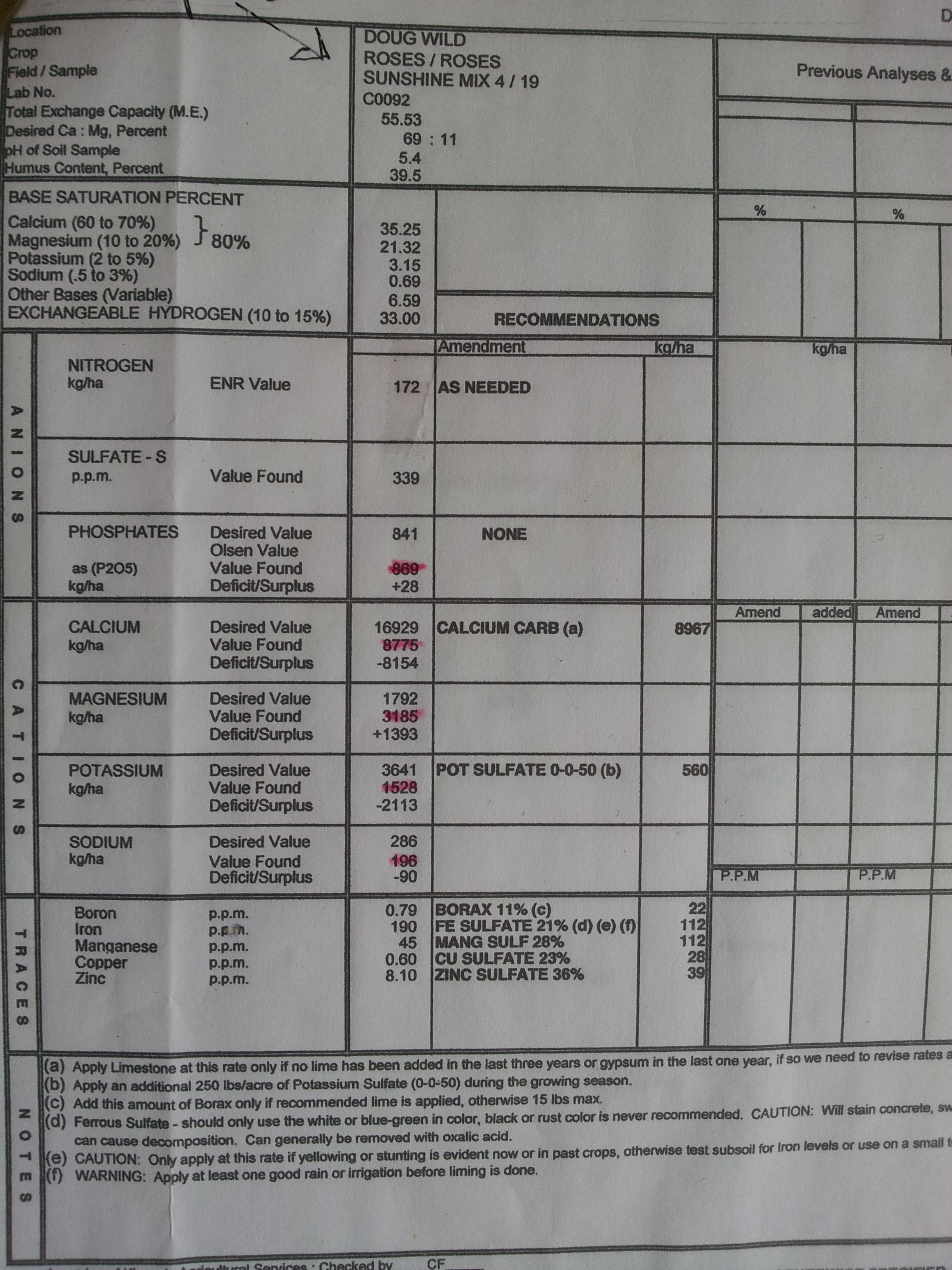
I use a very high end fertilizer that commercial rose breeders use for seedling development
C’mon, you can tell us what it is. AFAIK there are no brand name prohibitions here.
Took a trip across an ocean to find that out…extract of HM.
Thank you for everyone’s input. I re-potted the seedling and put it under another light source that is higher than the other source and new growth looks to be ok.